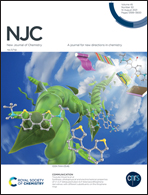Exploring the antioxidant activity of thiaflavan compounds: a quantum chemical study
Abstract
Density functional theory calculations at the B3LYP level are performed to theoretically investigate the antioxidant properties of 30 thiaflavan compounds. The main theoretical parameters, such as the bond dissociation enthalpy, ionization potential, proton dissociation enthalpy, proton affinity, electron transfer enthalpy, aromaticity index and spin density of O-atoms in the gas, water and benzene phases, have been determined. On the basis of our calculations, the OH groups in the A-ring are the main contributors of the antioxidative activities of thiaflavan comparatively to the B-ring. The reactivity of the thiaflavan compounds with the DNA bases is determined and the thymine moiety in DNA is found to be the primary target for reduction. Among the 30 compounds theoretically studied, the ones containing a ferrocene moiety at ring C′ of thiaflavan are the most promising for future applications in the pharmacology field and the food industry.



 Please wait while we load your content...
Please wait while we load your content...